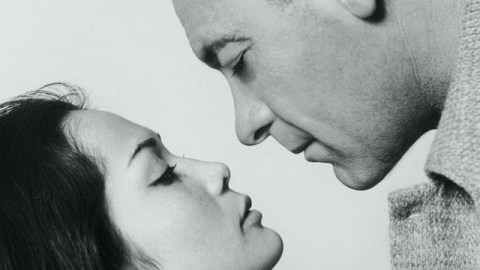The East is feminine

During the age of colonialism, Western powers conquered the people of Asia and objectified their women. This is well documented in literature, film, and scholarship: Here the dominant, masculine West; there the submissive, feminine East. This is the second part from a chapter on ‘Gender’ taken from the East-West dichotomy.
Western dominance versus Asian submission
Whatever the state of law is today, in China, Korea, Japan, and South-East Asia in general, a gentleman can only have one legal wife, but as many concubines, handmaids, or mistresses as he can afford (Gu, 1922). That said, promiscuous young women, even if married, as long as they do not have children, are usually ‘available’ to powerful men, married or not (Pan, 2004). In fact, there is a wealth of data suggesting that a high proportion of Chinese men are utilizing the increased access to mistresses and prostitutes (Pan, 2004) much more often than men living in the USA (Laumann et al., 1994), where married men tend to turn away from the competition for sexual partners, engage in parental activities, and thus stick to one woman (Gray, Yang & Harrison, 2006). Now, this open attitude towards concubines, handmaids, and mistresses is so omnipresent in Asia (especially in Thailand, Vietnam, China, Japan etc.) that it usually ‘blows’ the average American or European mind:
“The Chinese feminine ideal is for a wife to live absolutely, selflessly for her husband. Therefore when a husband who is sick or invalided from overwork requires a handmaid, a hand rack or eye rack [sic] to enable him to get well and to make him fit for his life work, the wife in China with her selflessness gives it to him just as a good wife in Europe and America gives an armchair or goat’s milk to her husband when he is sick or requires it.” (Gu Hongming, 1922)
When the West implemented its imperial agenda, like in all historical conquest, naturally the conqueror turned to the females of the conquered. What happened after this encounter with Asian sexuality, especially during the last 150 years of Western hegemony, can only be described as the thorough construction of a fabulous, sexist ‘Asian exoticism.’ This exoticism, in my view, demotes the submissive Asian woman to a plaything, and puts her at the mercy of Western master-race dominance. Asia thus became ‘feminized’:
“I shall choose a little yellow-skinned woman with black hair and cat’s eyes. She must be pretty. Not much bigger than a doll…”
…are the words of Louis Marie-Julien Viaud (1850-1923), alias Pierre Loti, an officer in the French navy stationed in Nagasaki, in his book Madame Chrysantheme (1887). The book talks about short-term marriages with Japanese ‘rashamen’ or “concubines of Westerners” (Loti, 2001).
This kind of representation of Asian woman and Asian sexuality prevails in hundreds of artworks, books, films, television shows, and musicals, and almost always entails interracial romances between European or American men with Asian women, for example in John Luther Long’s Madame Butterfly (Long, 2002), John Paris’ Kimono (Paris, 1947), Arthur Golden’s Memoirs of a Geisha (Golden, 1997), Max Clavell’s Shogun and Tai-pan (Clavell, 1986), and, of course, Marguerite Duras’ notorious L’Amant, in which a French teenage girl becomes the submissive, Sinicized mistress of a much older Chinese gentleman (Duras, 1984). And I haven’t even mentioned more hedonistic works such as Wei Hui’s Shanghai Baby (Wei, 2002) or Chun Sue’s Beijing Doll (Chun, 2004).
As Patricia Lin argued in Invented Asia (2007), “sexual encounters historically were initially predominantly between Western white men and Asian woman given the nature of colonial and business ventures which tended to favor situations where primarily men were sent out into Asian territories.” This is testified by the fact that Chinese and Japanese writers found it natural to depict dominant Western men as洋鬼子 (yang guizi, foreign devils from the ocean), who were evil, stout, and ugly (Zhou, 2000).
What happened in Asia before and between the First and Second Opium Wars (1839-1842; 1856-1860), the World Wars (1914-1918; 1938-1945), the Korean War (1950-1953), the occupation of Japan (1945-1952), Vietnam (1959-1975), and during the U.S. hegemony in Japan (1945-) compelled Western mass media and cultural consumer entertainment to strengthen the objectification of Asia: Asia as an all-perverted – animalistic if you like – place of Western sexual dominance versus Asian sexual submission.
Read Part I: Monogamy as a Western Invention?
Next post: Western Man and his Asian Plaything
Image credit: The World of Suzie Wong (1960)/Paramount Pictures




